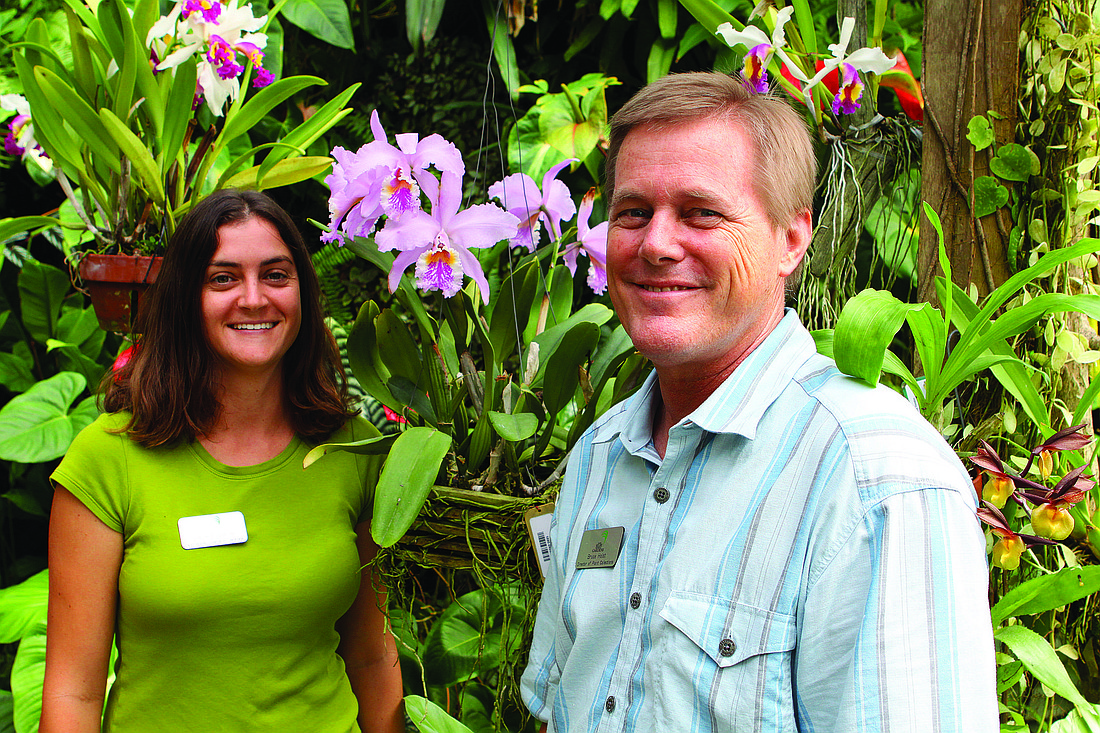- April 18, 2024
-
-
Loading

Loading

Bruce Holst and Laurie Birch, from Marie Selby Botanical Gardens, are gearing up for an important long-awaited trip. Holst, the director of plant collections, and Birch, a conservation project assistant, will be traveling with four other employees and volunteers from Selby this week to the Everglades, specifically to Long Pine Key, to begin reintroducing some rare orchids and ferns back into their natural habitats.
The opportunity came to Selby from the Institute for Regional Conservation, a privately funded institute that focuses mainly on the botany of South Florida. The institute secured funding and contracted Selby’s research department in 2005 to do collections and propagation of the rare plants. Starting in December 2005, Holst made his first of four or five trips to the Everglades to collect specimens along with Jimi Sadle, an Everglades park biologist. Half of the specimens for the project, titled Rare Plant Augmentation in Everglades National Park, were left with Sadle, and the other half were brought back to Sarasota.
The project’s importance lies in the fact that the four plants that have been collected by Holst and Birch’s team are native Florida plants that have been slowly disappearing from the Everglades, due to charges in water flow that have impacted the vegetation; some poaching, especially of the big, showy orchids; and loss of habitats. The populations have diminished to the point that some of the species are not present in the Everglade National Park anymore.
The project involves two types of orchids (the mule ear and the Florida dancing lady) and two types of ferns (the maiden hair and the pecluma). The seeds and spores of these flora were kept in labs and germinated on an agar medium, a gel-like substance that is full of nutrients, inside test tubes and glass jars for about a year-and-a-half. Germinating these plants is not easy, and they spent a year-and-a-half in the lab before being placed into the greenhouses.
“For months, you would be looking at them (the spores and seeds) in the lab and nothing looked different,” said Birch.
Birch joined Holst on the project in 2008.
“The fact that we have grown these orchids for so long, the ferns, too, it’s like we are finally releasing them out into the wild!” she said.
Although the project is mainly Holst’s and Birch’s, Holst feels that without the volunteers and help from the Horticulture Department, the project would not have come this far.
“They took them (the plants) over after we grew them up from babies,” he said. “We also had a lot of volunteer help. Without them, the plants wouldn’t be to the stage they are. They have helped really increase heir chance for survival.”
Holst and Birch will be traveling to Long Pine Key with about 1,000 plants in total and will have another 500 to 1,000 plants to put back into the wild when they meet up with Sadle. Holst and Birch will also be accompanied by Lisa Wade, the senior gardens horticulturalist at Selby; Heather Hill, a graduate student; David Troxell, Birch’s fiancé and former gardens horticulturalist at Selby; and Chad Papa, a recent college graduate and volunteer. The team will also meet up with a few members from the institute who will be coming to help with the project.
The two-day trip will require the team to scout out the best places to place the plants, whether they need to be put into the ground or need to be attached to the trunks and branches of trees. The epiphytes, plants that do not grow in the soil, will be attached to the trees with a special mesh and a grafting tape.
For now, the four plants are waiting in two of the seven greenhouses at Selby Gardens. Holst and Birch check on the plants daily and will have to figure out the best way to transport the orchids and ferns down to Long Pine Key.
While inspecting one of the paclumas, he finds that on the underside of one of the leaves, there are tons of spores.
“This one here is ready to be a productive member of society,” says Holst with a large smile.
Contact Rachel O'Hara at [email protected].
Plant-based
Bruce Holst and Laurie Birch have had their fair share of working in labs and with rare, tropical plants. Holst attended University of California-Davis and graduated with a degree in plant science and then joined the Peace Corps and worked in Honduras. He also worked at the Missouri Botanical Gardens for 10 years and has been working on “The Flora of the Venezuelan Guyana” for the past 25 years.
Birch graduated in 2004 from University of Florida with a degree in eco-tourism and fell in love with working with rare plants after working at a botanical garden that focused on rare plants of Florida.